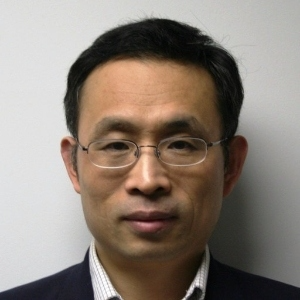Nanotechnology has been more prevalent in our daily lives in recent years. Through an integrated approach, this ground-breaking technology has been implemented in a variety of industries. Nanomedicine is the application of nanotechnology for medical reasons, and it is described as the use of nanoparticles for disease diagnosis, monitoring, control, prevention, and therapy. Nanomedicine is the use of nanotechnology to accomplish healthcare innovation. Furthermore, the nanometric scale is also the scale of many biological mechanisms in the human body, allowing nanoparticles and nanomaterials to potentially cross natural barriers to reach new delivery sites and interact with DNA or small proteins at various levels, whether in blood or within organs, tissues, or cells. Hundreds of nanomedicine products are currently in clinical trials, spanning all major diseases such as cardiovascular, neurological, musculoskeletal, and inflammatory diseases. Nanomedicine is an enabling technology in all fields of healthcare, with over 80 marketed products ranging from nano-delivery and pharmaceuticals to medical imaging, diagnostics, and biomaterials.
Nanosensors are sensitive materials that transmit chemical, physical, and biological data regarding nanoparticles and recognition molecules. Nanosensors operate at the "Nano" level. The term "nano" refers to a measuring unit of approximately 109 meters. A nanosensor is a device that can transmit data and information about the behaviour and features of nanoscale particles to a macroscopic level. Nanosensors can be used to detect chemical or mechanical information on the nanoscale, such as the presence of chemical species and nanoparticles, or to monitor physical factors like temperature. The construction and application of nano sensors can be used to classify them.
- Biomems/NEMS
- Diagnostics
- Medical Imaging
- MEMS
- Micro/Nano-Chip
- Micro/Nanorobotics Drug Delivery
- Micro/Nanoscale Photodetectors
- Microfluidics and Nanofluidics
- Microplasma Devices
- Micro-Sensors and Devices
- Nano Therapeutics
- Nano Vaccines
- Nanooptics And Nanospectroscopy
- Nanophotonics
- Nanoprobes
- Nano-Sensors and Devices
- NEMS
- Regenerative Medicine
- Sensors Based on Nanomaterials
- Sensors Based on Two-Dimensional Materials

Thomas J Webster
Hebei University of Technology, United States
Hossein Hosseinkhani
Innovation Center for Advanced Technology, Matrix, Inc., United States
Hai Feng Ji
Drexel University, United States
Paulo Cesar De Morais
Catholic University of Brasilia, Brazil
Azzedine Bensalem
Long Island University, United States
Robert Buenker
Wuppertal University, Germany
Rafal Kozubski
Jagiellonian University in Krakow, Poland
Sylwia Wcislik
Kielce University of Technology, Poland
Raman Singh
Monash University-Clayton Campus, Australia


Title : Circumventing challenges in developing CVD graphene coating on mild steel: A disruptive approach to remarkable/durable corrosion resistance
Raman Singh, Monash University-Clayton Campus, Australia
Title : Highlighting recent advancements in electromagnetic field subwavelength tailoring using nanoparticle resonant light scattering and related topics
Michael I Tribelsky, Moscow State University, Russian Federation
Title : The impact of nanomedicine: 30,000 orthopedic nano implants with no failures and still counting
Thomas J Webster, Hebei University of Technology, United States
Title : Logistic-modified mathematical model for tumor growth treated with nanosized cargo delivery system
Paulo Cesar De Morais, Catholic University of Brasilia, Brazil
Title : Current and future of red and black phosphorus nanomaterials
Hai Feng Ji, Drexel University, United States
Title : Azodye photoaligned nanolayers for liquid crystal: New trends
Vladimir G Chigrinov, Hong Kong University of Science and Technology, Hong Kong
Title : Atomistic simulation of chemical ordering phenomena in nanostructured intermetallics
Rafal Kozubski, Jagiellonian University in Krakow, Poland
Title : The enhanced cytotoxic effect of curcumin on leukemic stem cells via CD123-targeted nanoparticles
Wariya Nirachonkul, Chiang Mai University, Thailand
Title : Efficiency of nanoparticles (Micromage-B) in the complex treatment of multiple sclerosis
Andrey Belousov, Kharkiv National Medical University, Ukraine
Title : Innovative method of nanotechnology application in the complex treatment of multiple sclerosis
Andrey Belousov, Kharkiv National Medical University, Ukraine